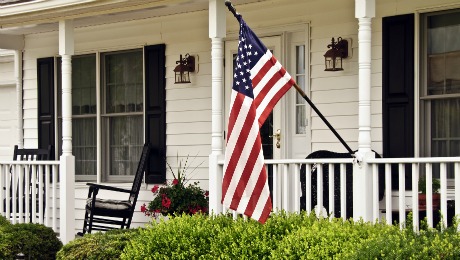Foreclosure Rate Drops Nationwide

It’s a pretty simple concept: Fall behind on your mortgage payments and there’s a good chance you could go into foreclosure. Of course, the economi downturn of 2008 that followed a historic housing boom was a little more complicated than that. However, it seems to have gotten the collective attention of American home buyers!
The latest reports from CoreLogic, the California-based corporation that provides a vast amount of data on financial, property and consumer trends, reveal that the rate of foreclosures is in sharp decline. CoreLogic’s June 2015 National Foreclosure Report revealed that within the last year, foreclosure inventories nationwide are down by 30 percent. The number of completed foreclosures dropped by nearly 15 percent.
All of this data is invariably compared to September 2010 – that’s when the number of completed foreclosures reached their highest level, with 117,119 during that month alone. Please note that there were also scores of properties in the pre-foreclosure phase. All told, the analysts from CoreLogic report that, “Since September 2008, about 5.8 million completed foreclosures have occurred across the country.”
With the decline in foreclosure activity, it would appear that the current population of homeowners holding mortgages are being diligent about their financial responsibilities. A mortgage deemed “seriously delinquent” is one that is overdue by 90 days or more. CoreLogic analysts say that that category now makes up 3.5 percent or 1.3 million of mortgages throughout the country. That may sound like a lot, however, it is the lowest number of recorded delinquent mortgages since January 2008.
The overall rate of foreclosure is down to its lowest point since 2007. The chief economist for CoreLogic, Frank Nothaft, explained that several forces have been at play to induce this shift. He noted that the falling rate of foreclosure in the U.S. is “supported by a continuing decline in loans made before 2009, gains in employment, and higher housing prices.” Others may want to add that lenders have really tightened their belts and are enforcing much more stringent guidelines for hopeful borrowers. Also, many lending institutions have created mortgage education materials for those applying for home loans and may even offer classes on how to be a more responsible borrower.
Nothaft went on to point out that things aren’t exactly rosy everywhere, and that there are still some states where foreclosure rates have yet to fall significantly. He mentioned that in Denver and San Francisco, “the foreclosure rate has fallen to 0.3 percent.” In several Florida metros, it is ranging from 3.5 to over 4.5 percent. In fact, there were five states in all that accounted for almost half of the foreclosures so far this year.
Florida had the most, with 102,000, followed by Michigan with 46,000. Bringing up the rear was Texas with 33,000, California with 29,000 and Ohio with 27,000.
CoreLogic’s analysts also evaluated which states have the highest levels of foreclosure inventory. New Jersey was at the top with 4.9 percent, followed by its neighbor, New York who had 3.7 percent. In Florida, foreclosed properties comprised 2.9 percent of the market, in Hawaii the number was 2.5 percent and in the District of Columbia, it was 2.4 percent.
States with the most impressive numbers for the lowest number of foreclosures in their property inventories were Alaska with 0.3 percent, Colorado with 0.4 percent, Minnesota with 0.4 percent, Nebraska with 0.4 percent, and North Dakota with 0.4 percent as well.
Here’s a link to an excellent article about avoiding foreclosure from the folks at How Stuff Works: http://money.howstuffworks.com/personal-finance/debt-management/foreclosure2.htm
Subscribe To Our Newsletter
Sign up with your email address to receive news and updates.